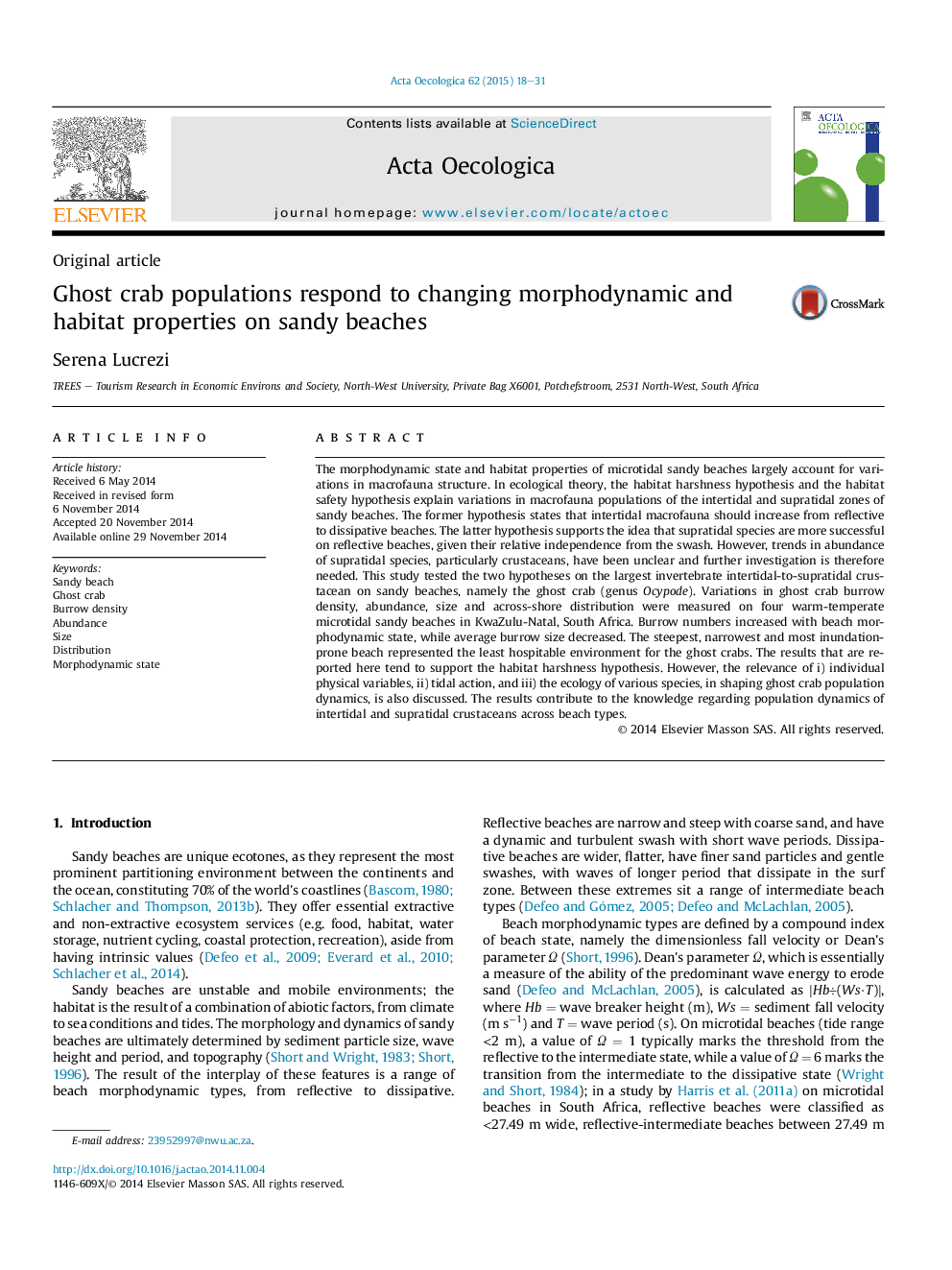| Article ID | Journal | Published Year | Pages | File Type |
|---|---|---|---|---|
| 4380721 | Acta Oecologica | 2015 | 14 Pages |
•Morphodynamics of micro-tidal sandy beaches should explain macrofauna structure.•Trends of supratidal crustaceans across beach types have been unclear.•Variations of ghost crabs (Ocypode) populations across beach types were assessed.•Numbers increased with beach morphodynamic state values, while size decreased.•Individual physical variables, tides and species' ecology also shape populations.
The morphodynamic state and habitat properties of microtidal sandy beaches largely account for variations in macrofauna structure. In ecological theory, the habitat harshness hypothesis and the habitat safety hypothesis explain variations in macrofauna populations of the intertidal and supratidal zones of sandy beaches. The former hypothesis states that intertidal macrofauna should increase from reflective to dissipative beaches. The latter hypothesis supports the idea that supratidal species are more successful on reflective beaches, given their relative independence from the swash. However, trends in abundance of supratidal species, particularly crustaceans, have been unclear and further investigation is therefore needed. This study tested the two hypotheses on the largest invertebrate intertidal-to-supratidal crustacean on sandy beaches, namely the ghost crab (genus Ocypode). Variations in ghost crab burrow density, abundance, size and across-shore distribution were measured on four warm-temperate microtidal sandy beaches in KwaZulu-Natal, South Africa. Burrow numbers increased with beach morphodynamic state, while average burrow size decreased. The steepest, narrowest and most inundation-prone beach represented the least hospitable environment for the ghost crabs. The results that are reported here tend to support the habitat harshness hypothesis. However, the relevance of i) individual physical variables, ii) tidal action, and iii) the ecology of various species, in shaping ghost crab population dynamics, is also discussed. The results contribute to the knowledge regarding population dynamics of intertidal and supratidal crustaceans across beach types.
